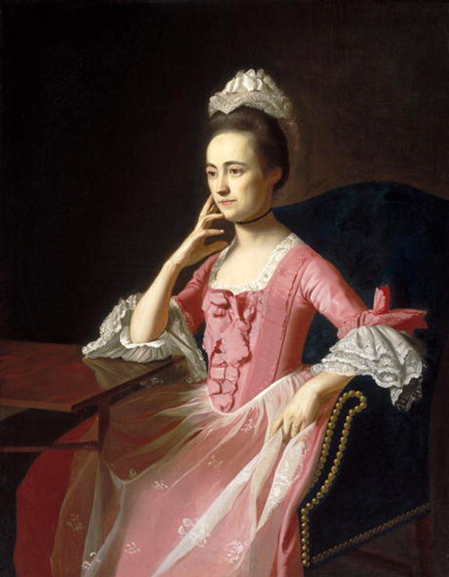It has been a while since I’ve been inspired to write anything, but it’s a new year, so it is time to consider the great fabric stash and determine the new gowns that need to be made. I will NOT purchase more fabric. I will repeat that as often as necessary. Something like this perhaps…

Here are just some of the fabrics remaining in my stash, and my 18th-century attire planned for them.
First is a gorgeous green mid-weight wool that I purchased a few years ago and it has aged nicely in the stash. Last spring I began making a gown and…well, I got busy in the summer, put it aside and didn’t finish it. It will be a standard English gown made with the Larkin and Smith pattern. I think I’ve experimented enough with this pattern that this should fit nicely when finished. It’s quite hard to capture the lovely color in photos, and as you can see, it looks different in each one.
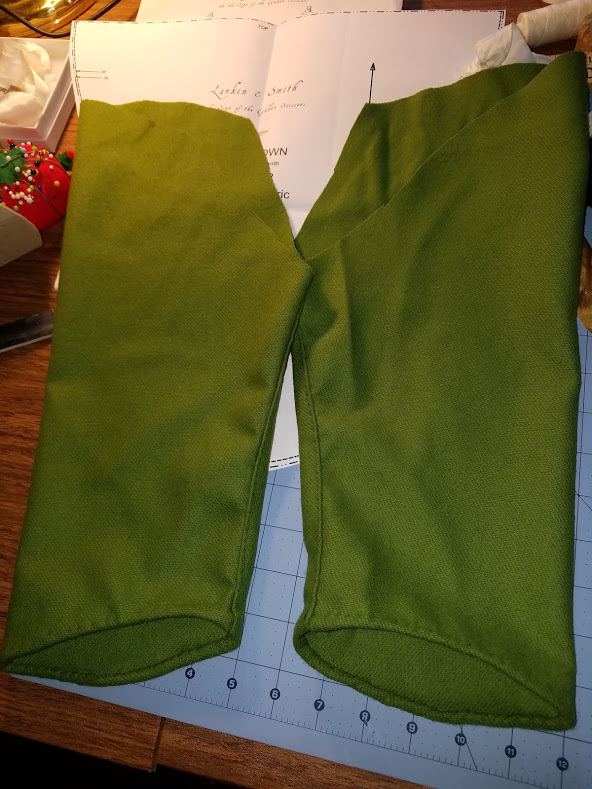
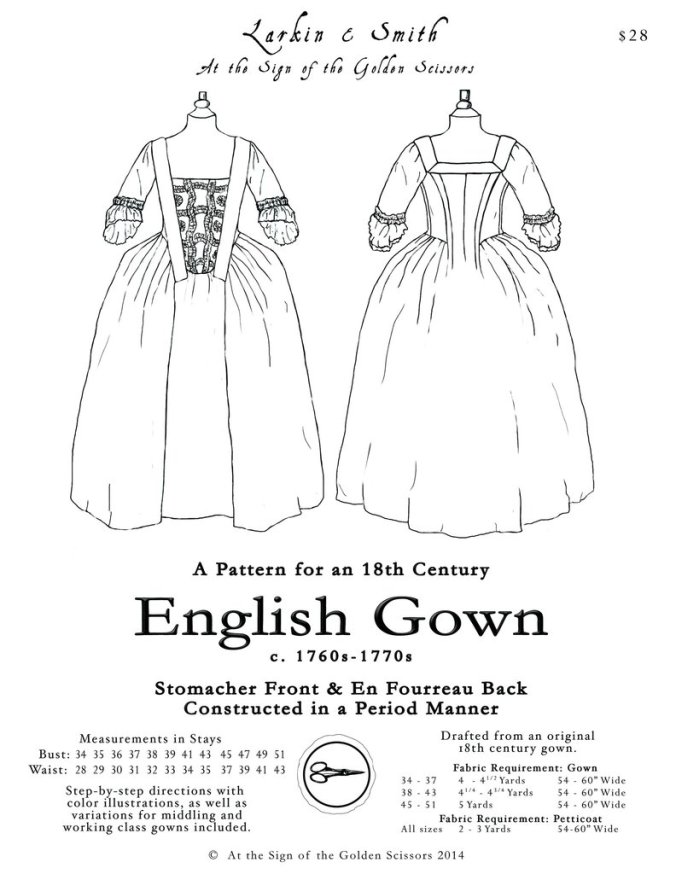
Update: It’s done!
Next on the list is a remake of a “mistake” made in 2006 or so. A friend made me a gown using the JP Ryan pattern. It was before I developed an eye for 18th-century fabrics, and was also before I learned gown construction. It was mostly machine-stitched and made from a fabric better suited to the 19th-century. It also had a separate bodice (view A) rather than the one-piece back (view B) which was more common. Not my friend’s fault…she did what I wanted. I loved that gown, as it was my very first, and have always wanted a more correct remake. Say what you will about the JPR pattern, but it fits my particular figure type very well and I like the pattern. Instead of following the instructions I use the period construction techniques I learned in workshops. I will be making View B, and I may or may not trim the front with self-fabric trim as in View A.
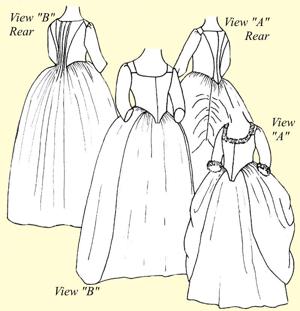
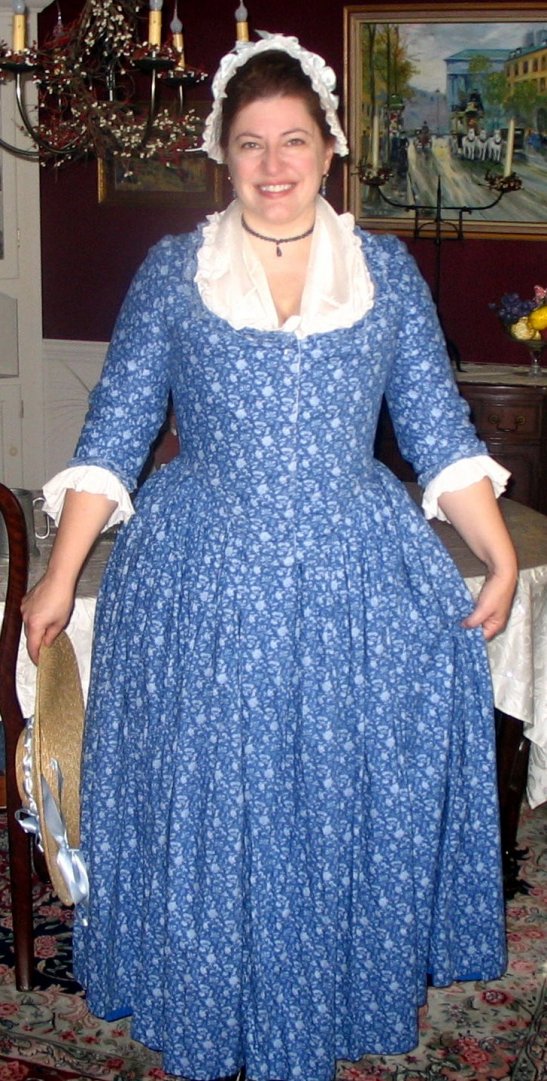
I dunno, I just loved everything about this gown. In the pic on the left below, it has a white tucker around the neckline. The pic on the bottom right shows the bottom of the bodice against the white apron.
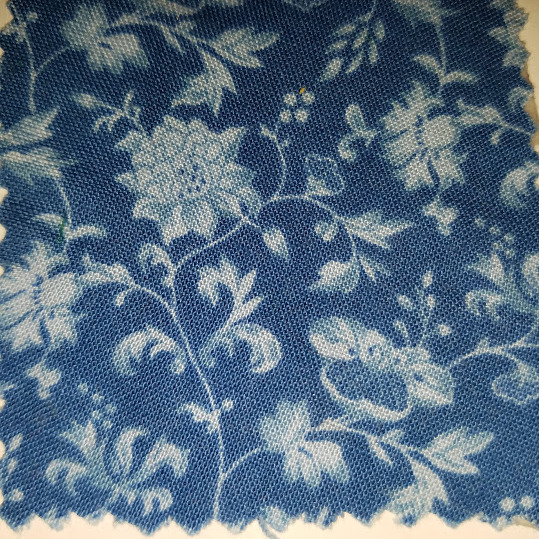
Detail of the original cotton print fabric. The print is a bit small, and doesn’t look enough like a block print.
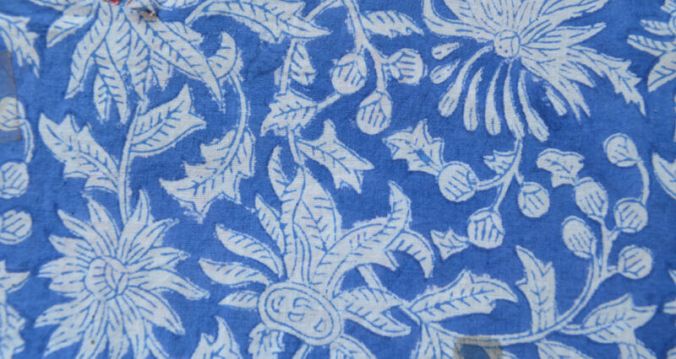
Detail of the replacement fabric, a block-printed cotton from India.
My friend has promised to come to help me cut and fit a red brocade gown with the Scalamandre fabric I scored on sale several years ago. This one might be my favorite gown of all time! The combination of the expensive fabric and wanting it to be perfect has caused me to delay making this over and over again. Also, I want to be skinnier (yeah, that’s gonna happen this year, uh huh, uh huh). Again, the original gown has probably been modified to be center front closing when styles changed in the 1780s so I will make this with a stomacher and robings as it probably originally appeared.
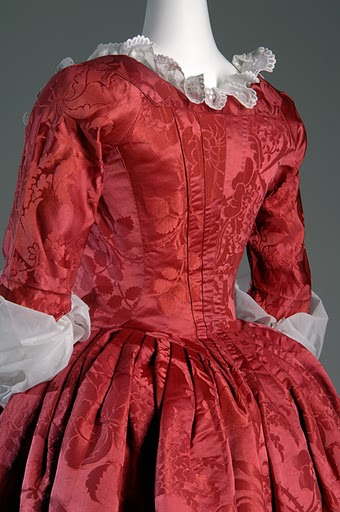
This gown resides at the Museum at FIT, but unfortunately, the photos are all on Pinterest and Tumbler and there is no link to the museum site.
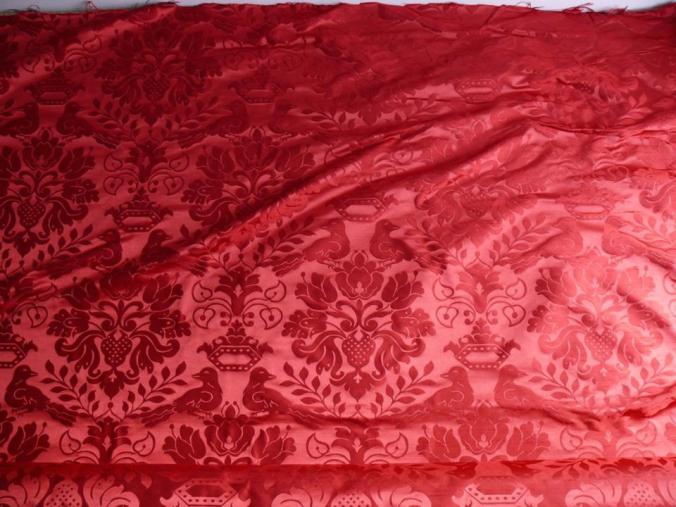
Scalamandre “Lovebirds” silk damask fabric.
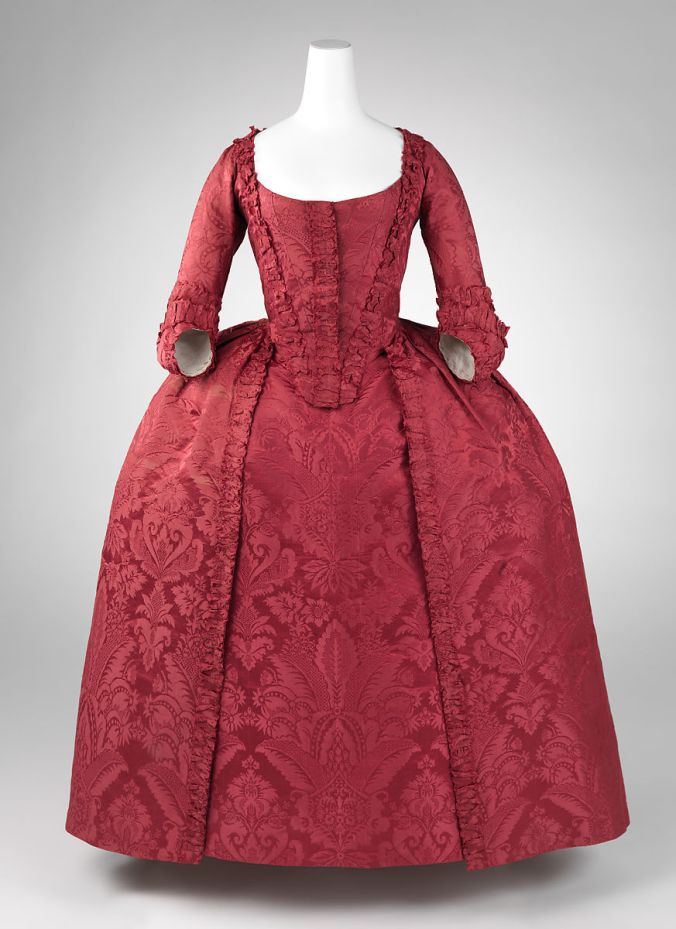
Here’s one from the Met. Fabric is from the 1730s, probably modified in the 1770s or 80s. https://www.metmuseum.org/art/collection/search/771113?searchField=All&sortBy=Date&deptids=62%7C8&ao=on&ft=*&offset=1640&rpp=20&pos=1657
The next fabric planned was probably already mentioned in a previous post. It is a lovely light pink silk taffeta, and I plan to make the gown on pp. 24-28 & 65 in Costume Close-Up by Linda Baumgarten and John Watson. The gown itself is in the Colonial Williamsburg collection. I’m no damned good at scaling up patterns, but I’m going to modify an existing pattern in my size to have the same shape as the pattern in the book. Good luck to me! I seldom make fitting muslins, but I will in this case.
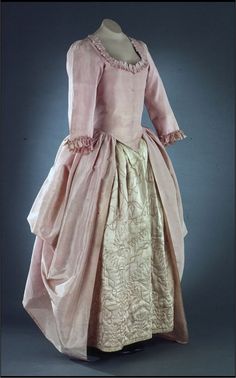
Gown in Colonial Williamsburg’s Collection. This was originally lavender and has faded to pink.
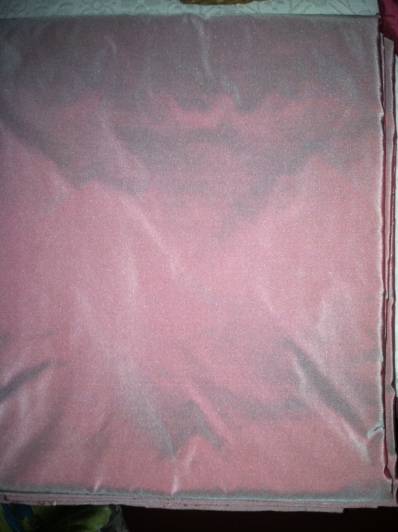
Then there’s some dark pink silk slated to become a “Fashionable Gown”. Larkin and Smith based their pattern on an extant gown in a museum, but I was unable to locate the source gown online. However, there were a couple of gowns in the Met Museum collection that looked very similar. The other option for this is a nicely decorated English gown like the portrait of Dorothy Quincy Hancock.
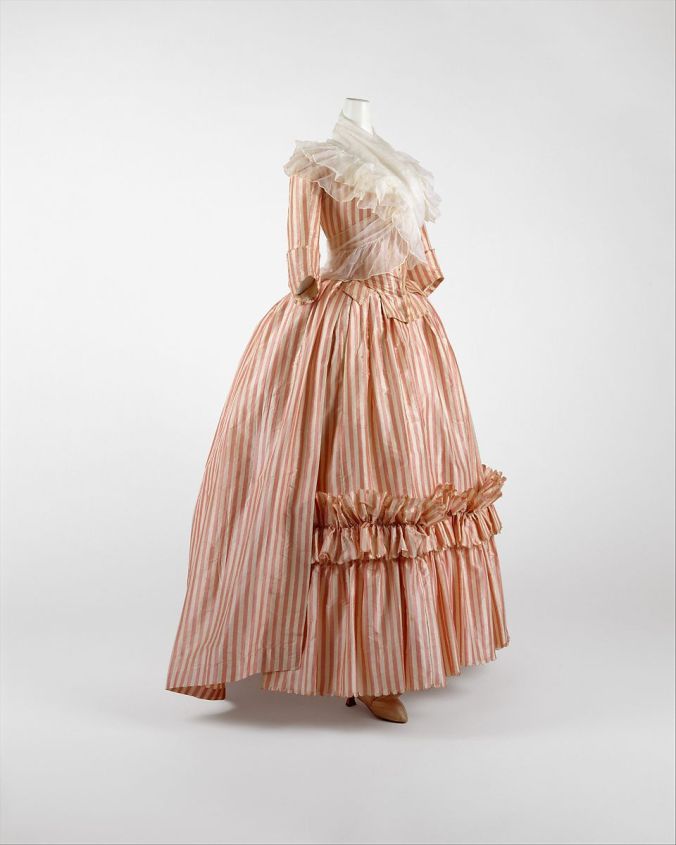
Enterhttps://www.metmuseum.org/art/collection/search/81105 a caption
Next is a gown based on the Oyster Seller made from a brown wool crossbar fabric. I meant to make this one several gowns ago but wanted to make sure that I had experimented enough with patterns to ensure that the gown would fit and that I wouldn’t want to sell it as soon as it was made. The painting is “Native Meltons” or “The Oyster Seller” by Philippe Mercier, based on a mezzotint in the British Museum.
The stash also contains lots of chintz fabric, most of which I have yet to decide what sort of gown they deserve. I’m always looking for examples.
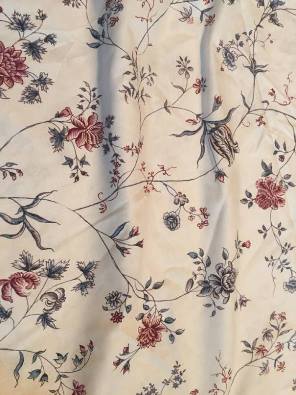
Colonial Williamsburg fabric based on the gown shown below in the Met Museum. https://www.metmuseum.org/art/collection/search/159201
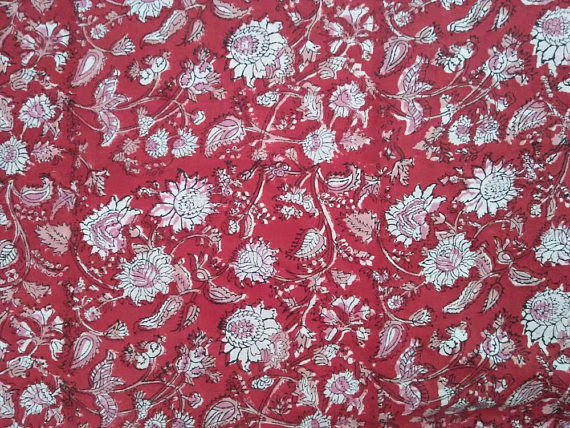
This fabric will make something similar to the gown below, although it will probably have robings and stomacher rather than center front closing.
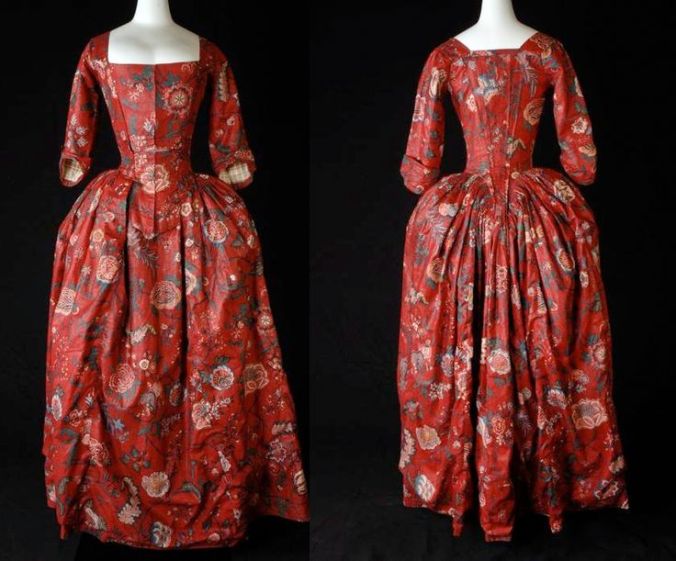
Red cotton print gown from the Museum Rotterdam. https://museumrotterdam.nl/collectie/item/20647
Finally, a remake of this gown is forthcoming. I made it about 10 years ago and wasn’t 100% happy with the fit so I sold it to a friend. It was also center front closing and was made just before conclusions were made that most gowns would have been stomacher front. This is another Colonial Williamsburg fabric based on an original 18th-century print.

Colonial Williamsburg India Garden chintz
This looks better from the back. The shoulder straps were too long, and the sleeves too roomy for my liking. When re-made, it will have a stomacher and robings.

As you can see, there are many more fabrics in the stash, but those are the planned projects for now. Ooh, wait… I need to make Sally Sayward Barrell’s blue silk gown. I hear that B&T has a blue silk taffeta. Repeat…I will NOT buy more fabric.

Sally Sayward (Mrs. Nathaniel Barrell) York, Maine. Portraits at the Sayward Wheeler House, and the Old York Historical Society.
As with anything, always subject to change on a whim! What goals do you have for this year?










